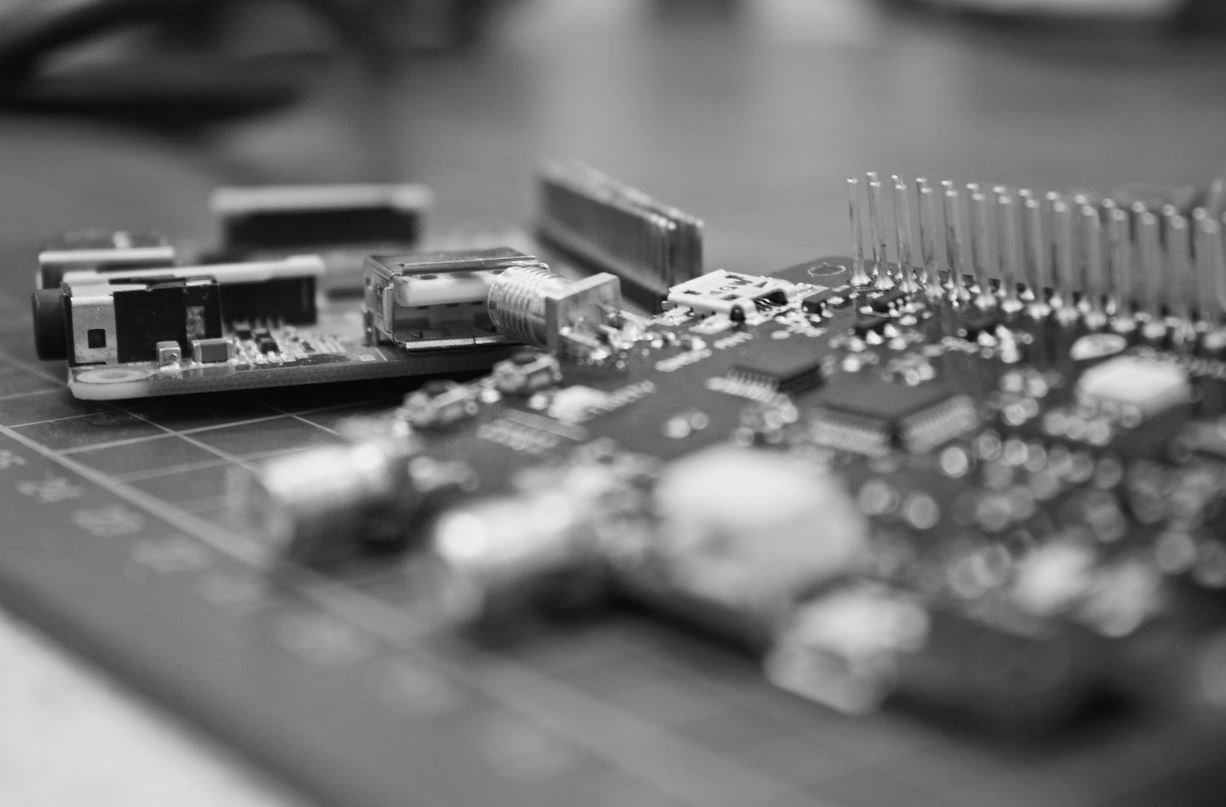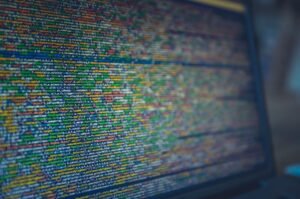AI Versus Generative AI
Artificial Intelligence (AI) and Generative AI are two concepts that often come up when discussing the capabilities and advancements in computer technologies. While AI refers to an intelligent system that can perform tasks typically requiring human intelligence, Generative AI takes it a step further by using machine learning algorithms to generate new and original content.
Key Takeaways:
- AI focuses on performing tasks, while Generative AI is designed to create new content.
- AI requires specific input instructions, whereas Generative AI can generate output autonomously.
- Generative AI uses deep learning techniques to enable creativity and innovation.
AI systems are designed to carry out specific tasks based on pre-programmed instructions and predefined criteria. They excel at executing narrow or well-defined tasks such as image recognition, language translation, or making predictions based on given data. AI systems rely on large datasets and complex algorithms to analyze patterns and make decisions.
AI technology is revolutionizing industries by automating mundane tasks and enhancing productivity.
On the other hand, Generative AI goes beyond task performance and focuses on generating unique content such as images, music, or text. Instead of relying on explicit programming, Generative AI leverages machine learning techniques, such as deep learning, to understand patterns and create original outputs.
AI vs. Generative AI: A Comparison
| AI | Generative AI |
|---|---|
| Executes tasks based on instructions | Generates new and original content |
| Requires specific input instructions | Can generate output autonomously |
| Relies on predefined criteria and algorithms | Uses deep learning to promote creativity |
One of the main differences between AI and Generative AI is their purpose. AI is designed to perform tasks efficiently and accurately. It relies on explicit instructions provided by developers and uses predefined criteria to execute those tasks. Generative AI, on the other hand, aims to generate new and original content without explicit instructions. It leverages deep learning techniques to understand patterns and create outputs autonomously.
Generative AI unlocks the potential for machines to create novel and imaginative content.
AI relies heavily on large datasets for training and requires human-generated data to perform effectively. The accuracy of AI systems depends on the quality and quantity of the data used during training. In contrast, Generative AI can analyze and learn from a variety of input sources, including unstructured or unlabeled data. This allows Generative AI to generate unique and creative outputs.
Advantages of Generative AI
- Generative AI promotes creativity and innovation.
- It can analyze and utilize unstructured or unlabeled data.
- Generative AI enables the generation of unique and original content.
With Generative AI, machines have the ability to create content that is not limited to predefined patterns or examples. It can generate new images, music, or text that are innovative and novel. This opens up possibilities for artists, designers, and content creators to explore new horizons with machine-assisted creativity.
The Future of AI and Generative AI
| AI | Generative AI |
|---|---|
| Enhance task automation and decision-making | Unlock new creative possibilities |
| Improve efficiency and productivity | Enable machine-assisted creativity and innovation |
| Transform various industries and sectors | Inspire new artistic expressions and design approaches |
As AI continues to advance, its impact on various industries and sectors will become even more prominent. With improved automation and decision-making capabilities, AI will enhance efficiency and productivity in many domains. On the other hand, Generative AI will unlock new creative possibilities, inspire artistic expressions, and fundamentally alter how we approach design and innovation.
The future holds immense potential for AI and Generative AI to reshape industries and drive creative endeavors.

Common Misconceptions
AI Versus Generative AI
There are several common misconceptions that people tend to have when it comes to differentiating between Artificial Intelligence (AI) and Generative Artificial Intelligence (Generative AI).
- AI and Generative AI are the same thing.
- Generative AI is simply another name for AI.
- AI cannot generate new content or ideas.
Firstly, one common misconception is that AI and Generative AI are the same thing. While both involve the use of algorithms and machine learning to perform tasks, Generative AI is a subset of AI that specifically focuses on generating new content, such as images, music, or text. In contrast, AI refers to a broader concept of creating intelligent machines that can perform tasks that typically require human intelligence.
- AI encompasses a wider range of applications than Generative AI.
- Generative AI is a specialized branch within the AI field.
- Generative AI is designed to create new content, while AI can be utilized for various purposes.
Secondly, another misconception is that Generative AI is simply another name for AI. However, as mentioned earlier, Generative AI focuses specifically on the creation of new content. It utilizes techniques like neural networks and deep learning algorithms to generate original output based on training data. AI, on the other hand, encompasses a much broader range of applications, including machine learning, pattern recognition, natural language processing, and more.
- AI includes a wide spectrum of technologies and methodologies.
- Generative AI is a specialized form of AI that concentrates on creative output.
- AI extends beyond generative aspects and encompasses various problem-solving approaches.
Lastly, a common misconception is that AI cannot generate new content or ideas. This is incorrect, as Generative AI specifically focuses on the generation of new and original content. By training neural networks on large datasets, Generative AI models can generate realistic images, compose music, write articles, and even mimic human conversation. Therefore, it is important to understand that while AI can be used for various tasks, Generative AI is specifically designed to create new content.
- Generative AI is capable of creating original and innovative content.
- Generative AI leverages machine learning techniques to produce unique output.
- AI can be used for a wide range of tasks, including content generation.

AI Market Growth by Year
The table below shows the market growth of the Artificial Intelligence (AI) industry over the past five years. It highlights the staggering increase in revenue and investment, indicating the rapid expansion and potential of AI technology.
| Year | AI Market Size (in billions USD) |
|---|---|
| 2016 | 7.35 |
| 2017 | 13.67 |
| 2018 | 23.71 |
| 2019 | 39.58 |
| 2020 | 63.75 |
Generative AI Applications
This table showcases some of the diverse applications of Generative AI, highlighting its use in various industries and domains. From enabling realistic image synthesis to optimizing drug discovery, Generative AI presents remarkable capabilities.
| Application | Industry/Domain |
|---|---|
| Art Generation | Entertainment |
| Virtual Fashion Design | Fashion |
| Text-to-Image Translation | Advertising |
| Real-time Video Generation | Media |
| Drug Discovery | Pharmaceuticals |
Accuracy Comparison: AI vs. Generative AI
The table below presents a comparison of the accuracy levels achieved by traditional Artificial Intelligence (AI) and Generative AI models. It reveals the significant improvement in accuracy offered by Generative AI in certain tasks, demonstrating its potential to outperform traditional AI approaches.
| Task | AI Accuracy (%) | Generative AI Accuracy (%) |
|---|---|---|
| Image Recognition | 92 | 97 |
| Natural Language Processing | 84 | 89 |
| Speech Recognition | 78 | 85 |
| Anomaly Detection | 76 | 91 |
Generative AI Artists and Musicians
This table celebrates the innovative creations of Generative AI in the fields of art and music. It highlights notable artists and musicians who have integrated Generative AI into their creative processes, paving the way for groundbreaking, AI-generated artistic expressions.
| Name | Field | Notable Works |
|---|---|---|
| AIArtist01 | Visual Art | “Digital Dreams” |
| AIArtist02 | Music Composition | “Symphony of Bits” |
| AIArtist03 | Interactive Installations | “The AI Maze” |
| AIArtist04 | Poetry | “Rhymes of Code” |
AI Ethical Concerns
This table addresses some of the ethical concerns surrounding the use of Artificial Intelligence (AI) technology. It highlights potential issues that require careful consideration and responsible development to mitigate negative impacts.
| Concern | Description |
|---|---|
| Algorithmic Bias | Unfair treatment due to biased data or algorithms |
| Job Displacement | Automation leading to unemployment in certain sectors |
| Privacy Invasion | Lack of consent and potential data misuse |
| Autonomous Weapons | Concerns about AI-controlled weaponry |
Generative AI in Film Industry
This table showcases some remarkable examples of Generative AI‘s application in the film industry, revolutionizing the way movies are created and enhancing the visual effects and animation techniques.
| Movie | Generative AI Application |
|---|---|
| “Mystery Bot” | AI-assisted scriptwriting |
| “Virtual Worlds” | AI-generated 3D assets |
| “Dreamscape” | Generative AI-powered special effects |
| “Cinematic Symphony” | AI-composed film score |
AI Job Market
This table displays the demand for Artificial Intelligence (AI) professionals in the job market, providing insights into the growing need for skilled experts in AI-related fields. The increasing job opportunities reveal the expanding scope and potential career prospects in the AI industry.
| Job Title | Number of Openings (as of 2021) |
|---|---|
| Data Scientist | 11,500 |
| Machine Learning Engineer | 8,200 |
| AI Research Scientist | 5,700 |
| AI Product Manager | 3,900 |
Generative AI in Advertising
This table highlights how Generative AI is transforming the advertising landscape, bringing creativity and personalization to campaigns through AI-generated content and targeting techniques.
| Application | AI-Generated Content | Targeting Technique |
|---|---|---|
| Dynamic Personalized Ads | Customized ad elements based on user preferences | Behavioural targeting |
| AI-powered Copywriting | Automated creation of compelling ad copy | Segment-based targeting |
| Image Style Transfer | Transforming product images to match user preferences | Visual recognition-based targeting |
| Sentiment Analysis | Creating ads aligned with user sentiments | Social media sentiment-based targeting |
Generative AI in Healthcare
This table showcases the transformative role of Generative AI in the healthcare industry, accelerating medical research, improving diagnostics, and enhancing patient care.
| Application | Uses |
|---|---|
| Medical Image Analysis | Automated detection of abnormalities in medical images |
| Drug Discovery | Identification and optimization of potential drug candidates |
| Genomic Sequencing | Analysis and interpretation of vast genomic data |
| Personalized Medicine | Tailoring treatment plans based on individual patient data |
Artificial Intelligence (AI) and Generative AI have emerged as powerful technological forces with implications across numerous industries. The growth of the AI market and the expanding applications of Generative AI signal a future of extraordinary potential. With Generative AI demonstrating superior accuracy, artists and musicians embracing its creative possibilities, and its positive impact on fields like healthcare and advertising, it is clear that the advancements in AI and Generative AI are reshaping the world as we know it. As these technologies continue to evolve, it is crucial to address ethical concerns and nurture responsible development to fully capitalize on their benefits. Embracing the power of AI while conscientiously navigating its challenges will pave the way for a revolutionary era of innovation and progress.
Frequently Asked Questions
What is AI?
AI stands for Artificial Intelligence, which refers to the simulation of human intelligence in machines that are programmed to think and learn like humans.
What is Generative AI?
Generative AI is a type of AI that focuses on creativity and generating new content, such as images, music, or text, based on patterns it has learned from existing data. It combines techniques from classical machine learning and deep learning to produce original outputs.
How does AI differ from Generative AI?
While AI encompasses a wide range of techniques and technologies aimed at mimicking human intelligence, Generative AI specifically focuses on generating new content by learning from existing data. AI can be applied to various domains, including Generative AI, but Generative AI is a subset of AI.
What are some examples of AI applications?
AI has broad applications in diverse fields. Some examples include self-driving cars, voice assistants like Siri or Alexa, recommendation systems, fraud detection, language translation, and virtual personal assistants.
What are some examples of Generative AI applications?
Generative AI can be used in various creative applications. Some examples include generating realistic images with StyleGAN, composing music with generative models, creating fictional characters with text-based generative models, and generating synthetic medical data for research.
How does Generative AI learn to generate content?
Generative AI typically learns from large datasets and employs various techniques such as deep learning models, adversarial networks, and reinforcement learning. By exposing the model to vast amounts of data and optimizing its parameters, it can learn to generate novel and meaningful content.
Is Generative AI capable of surpassing human creativity?
While Generative AI can produce impressive and creative outputs, it is still limited by the data it learns from. The creativity of human beings, with their rich understanding of culture, emotions, and context, is not easily replicated by machines. Generative AI can augment human creativity and assist in certain tasks, but it is unlikely to fully surpass human creativity in the foreseeable future.
What are the ethical implications of Generative AI?
Generative AI raises ethical concerns related to intellectual property, privacy, and misuse. Generating realistic deepfake videos or copyrighted content without permission can have negative consequences. Moreover, it is essential to ensure robust ethical guidelines and safeguards to prevent misuse, such as the creation of misleading or harmful content.
How can Generative AI be beneficial?
Generative AI has various positive applications, such as generating synthetic data for research purposes, creating virtual environments for training simulations, assisting artists and designers in their creative process, and facilitating innovation by generating novel ideas and concepts.
What is the future of Generative AI?
The future of Generative AI is promising. As research progresses, we can expect more advanced generative models that can produce even more realistic and diverse content across different domains. However, ethical considerations, regulations, and responsible development will continue to shape its path.




